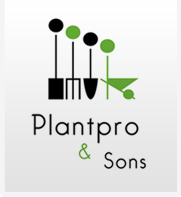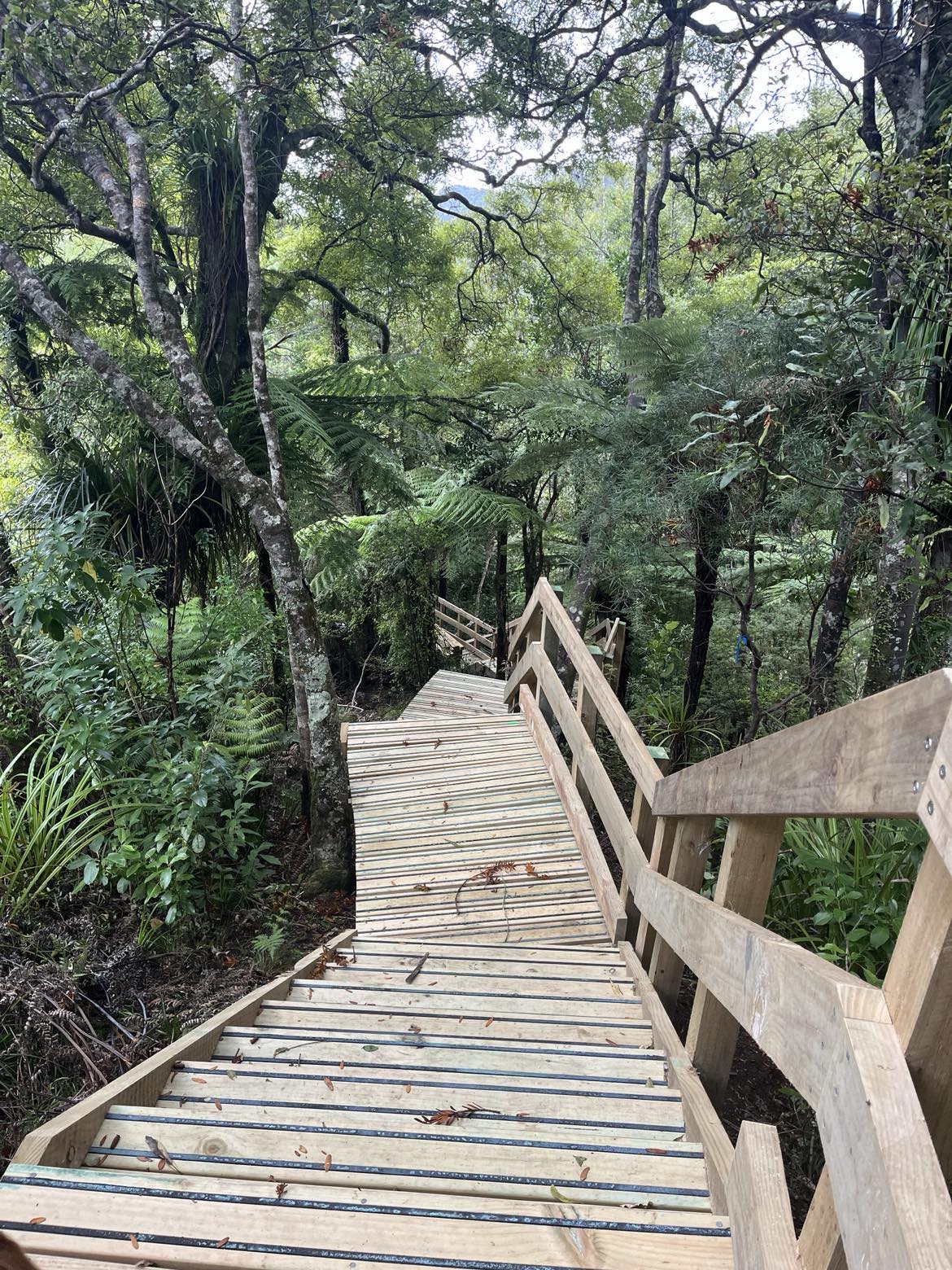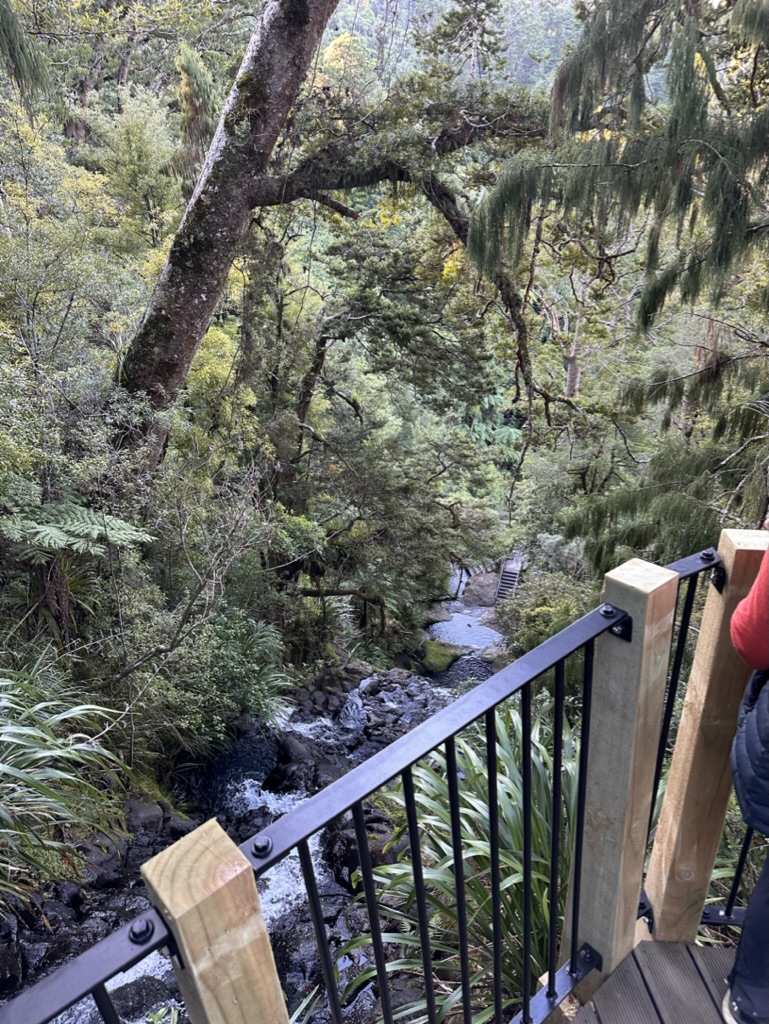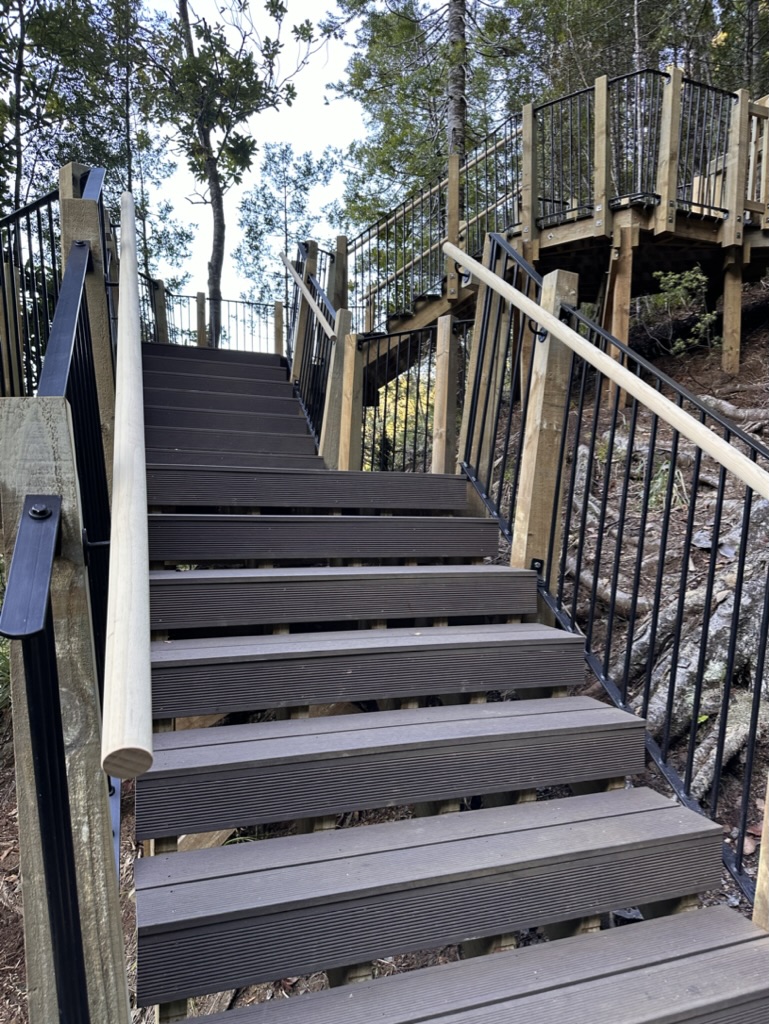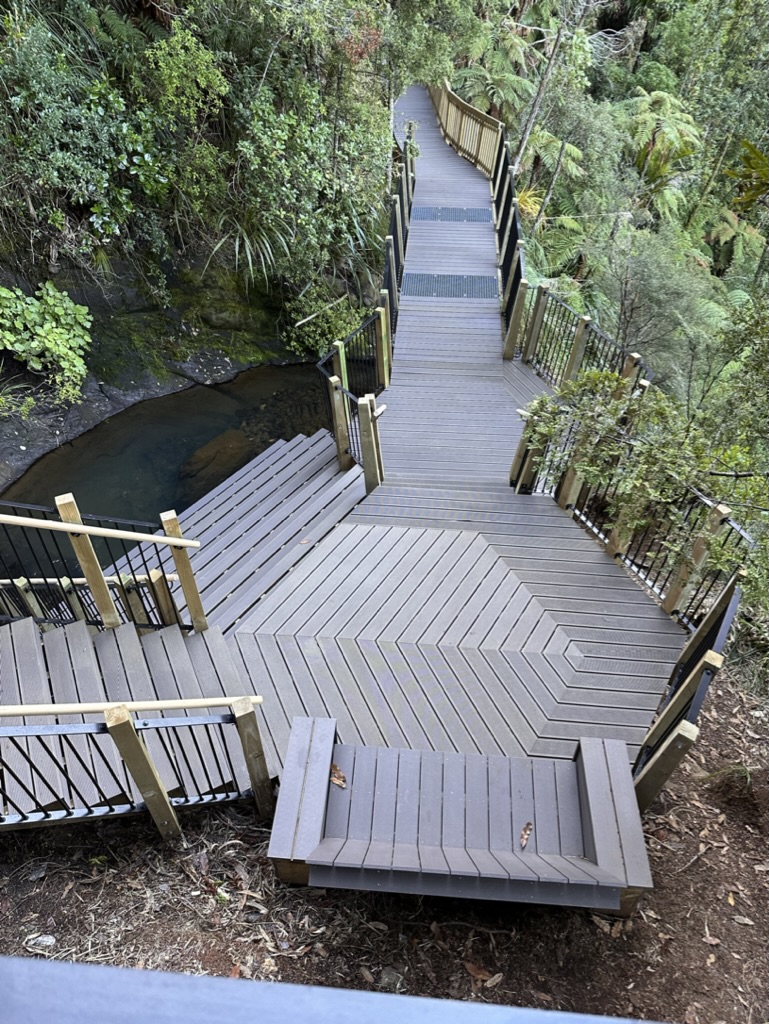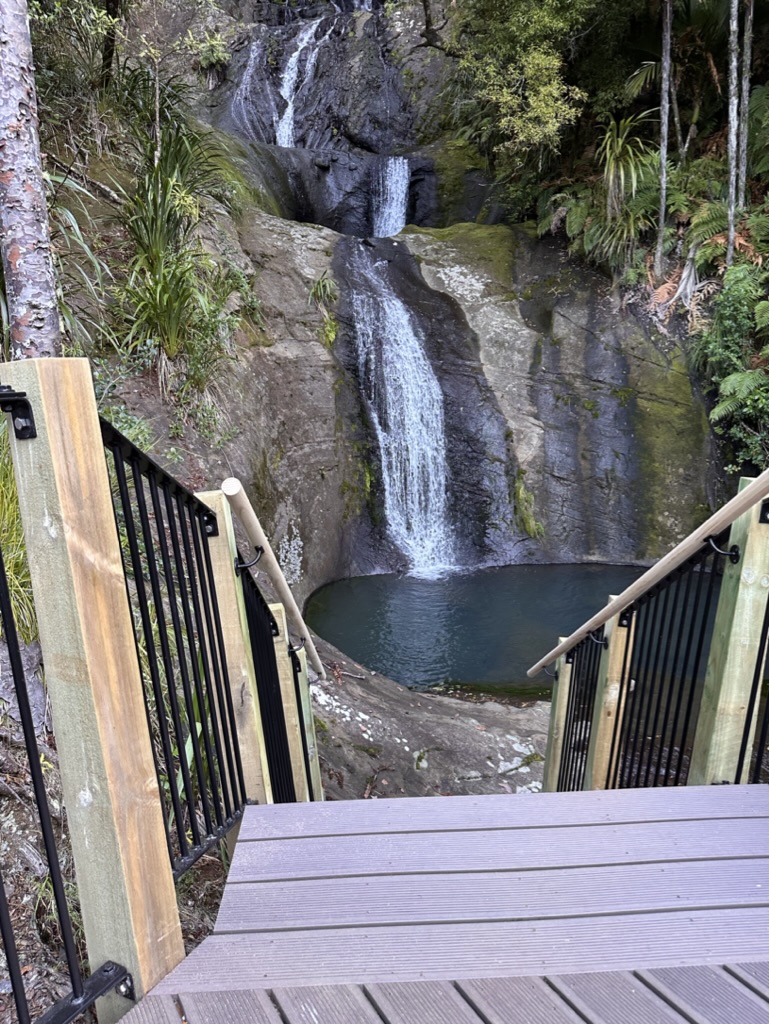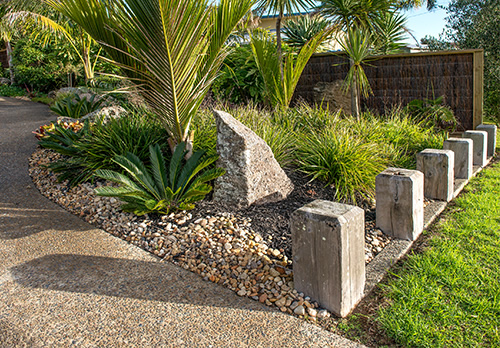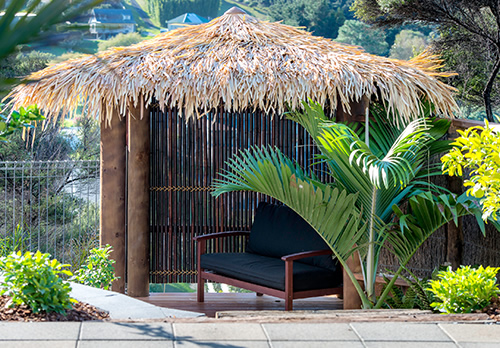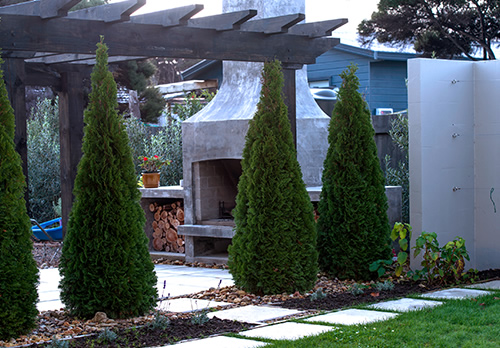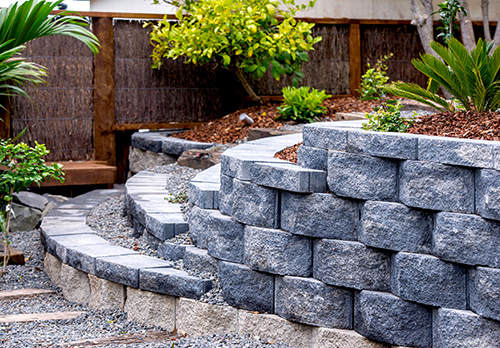Track Construction Experience
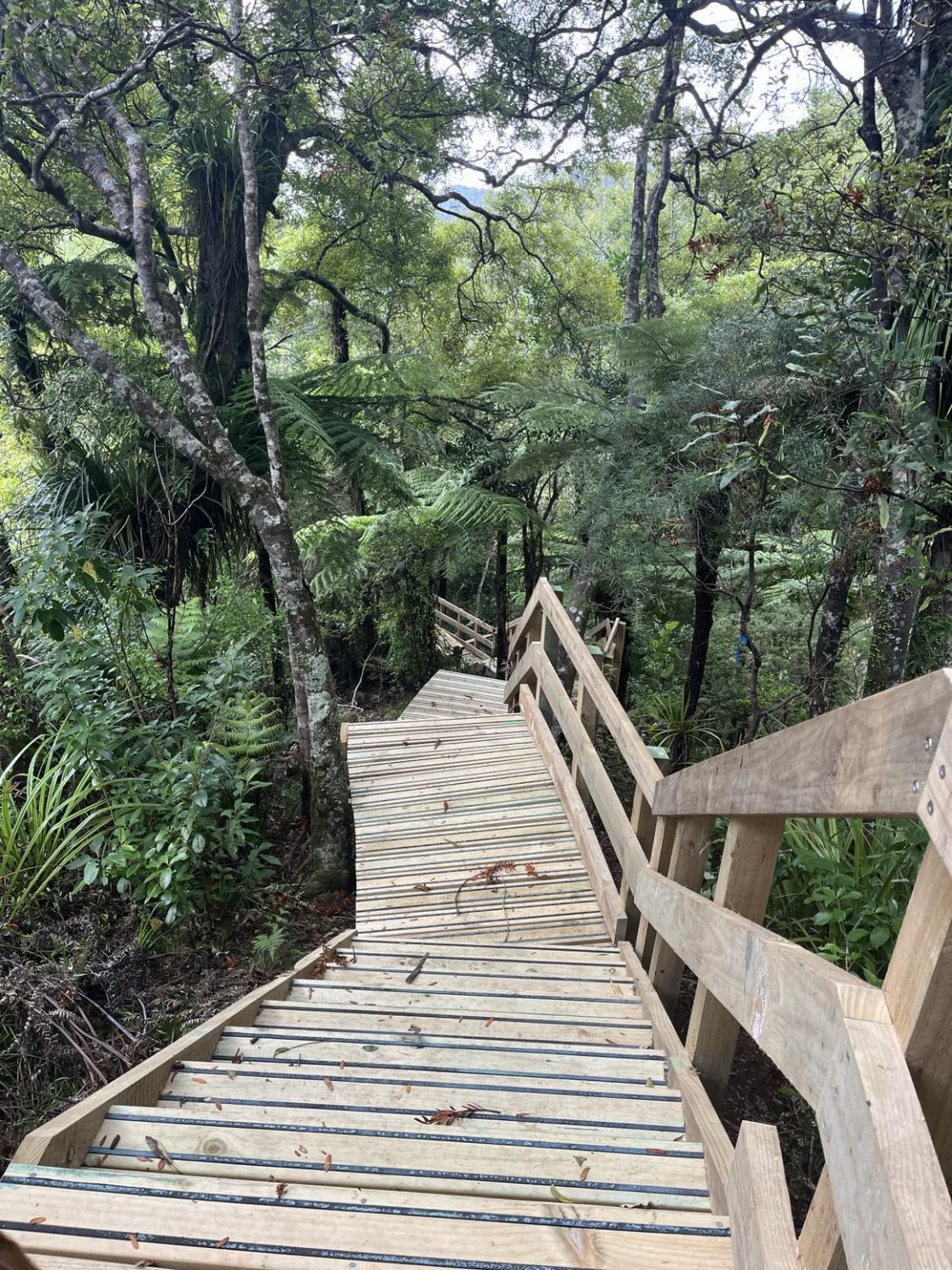 Over the last 13 years Plantpro has completed many projects upgrading walking tracks across the North Island.
Over the last 13 years Plantpro has completed many projects upgrading walking tracks across the North Island.
Plantpro began its journey into track construction in 2012 building tracks on the Great Barrier Island. Since then we have completed more than 20 track contracts for local councils, the Department of Conservation and other government organisations. We have even built a handful of walking tracks for private clients.
Each new track brings its own set of challenges, from remote locations where our teams are required to either camp or hike into site each day, to tricky terrain working on the edge of cliffs and mountain sides. Occasionally our team will be working near a water source or at heights- we have developed strategies to best address all of these challenges.
The specific experience and skills we have developed over the last thirteen years mean that Plantpro is at the forefront of the trackworks industry in New Zealand.
Fairy Falls Project
In late 2022 we were awarded the opportunity to undertake the redevelopment of the Fairy Falls walking track and structures upgrade in the Waitakere ranges. While we frequently install box steps and low boardwalks this project was unique. Construction would primarily be a series of staircases and platforms floating over the edge of a waterfall.
This was an extremely complex site which had various elements to take into consideration during construction. As well as the water fall, there was a significant Kauri grove, working at heights hazards and an unstable base for construction.
Upon consideration of the unique hazards this contract possessed the Plantpro team participated in a Heights safety and awareness course. We learnt how to set up, inspect and work in a total restraint system, ensuring that while working at heights the risk of falling was minimised. This was essential considering that at several times during the project the team would be required to work very close to the edge of a waterfall.
Summer 2022-23 was unusually wet for the North Island of New Zealand. Both ex-tropical cyclones Hale and Gabrielle made landfall within weeks of each other. The poor weather and increased soil moisture levels delayed the start of this project until the end of April 2023.
Construction
We began work on the first stage of this project, improving and resurfacing 143m of gravel track at the top of the hill. We then constructed series of low boardwalks and staircases meandering down the hillside towards the top of the waterfall.
The second stage of the project encompassed the construction of the structures which floated above and alongside the waterfalls. A collection of six hexagonal viewing platforms in varying sizes. Each was connected by staircases which ultimately led to steps entering the swimming hole at the base of the waterfall.
We implemented the removal of an existing bridge and structures, and the installation of two Glulam bridges, and Fibreglass reinforced plastic mesh along the boardwalks.
Despite engineering plans provided with the contract, the challenging nature of the work site required revised design decisions between the contractor, engineer, and Auckland Council during construction. There were ongoing discussions with Biosecurity to confirm the best way to construct the waterfall structures while not compromising the Kauri zone.
Construction Statistics
In June 2024 our team completed their work upgrading the Fairy Falls walking track 14 months after construction began.
During this time they:
- Resurfaced 143m of track with metal aggregate.
- Installed 30m of box steps.
- Constructed 147m of low boardwalks.
- Constructed 138m of staircases
- Installed 309m of barriers.
- Constructed 48m of viewing platforms.
- Installed 2 Glulam bridges.
- Conducted 6 Flying operations with Helisika Helicopters transporting equipment and materials to and from the site.

In mid-2024 Auckland Council offically reopened the Fairy Falls track to the public. Since then this track has been walked by thousands of people. Check out #Fairyfalls to see their experiences on social media. If you’re heading to Auckland why not plan a trip to visit? The walk is approximately 3km long and take around 1.5hrs. We’d love to see your photos and hear your feedback!
Why upgrade the Fairy Falls Track?
The Fairy Falls track located in the Waitakere Ranges was originally closed in 2018. This closure was due to the significant risk Kauri Dieback posed to the Kauri trees within the area.
Kauri Dieback Protection
What is Kauri Dieback?
Phytophthora agathidicida (PA) is a soil-born pathogen which can kill Kauri trees of all ages. It is commonly referred to as Kauri dieback disease.
Kauri dieback is spread to trees through their roots as a result of soil or plant material being moved between the bases of the Kauri trees. This disease restricts the Kauri from being able to move water and nutrients from their roots to other parts of the tree, eventually starving and killing the tree.
How can we stop Kauri Dieback?
There is no known cure for Kauri Dieback. The only thing we can do is reduce its chance of spreading by preventing soil movement and limiting access to the base of Kauri trees.
Along the Fairy Falls track there are several large Kauri trees which needed to be protected. Every aspect of this project took that fact into consideration.
- Installing aggregate track surfaces minimised the potential for soil particles to be carried by feet into a Kauri Zone.
- Box steps, boardwalks, staircases and viewing platforms keep walkers separated from the Kauri tree roots.
- Installing barriers along the end of the track provides a further obstacle to deter people from moving off the path.
- Never cutting or disturbing the roots of Kauri trees.
- Permanent hygiene stations at the start of the track encourage all those who enter to do so with clean shoes-minimising the chance of importing the PA pathogen
What did Plantpro do to mitigate the risk of Kauri Dieback?
While working in the Kauri zone we used a variety of Kauri Dieback Protection preventative measurs. This ensured the work we were undertaking would not put the Kauri trees at risk.
Preventative measures during construction included:
- A hygiene station at the beginning of the track to the waterfall structure. Our team were required to clean their boots before travelling any further along the track. All tools and equipment past this point had been sterilized.
- Specific Hygiene Areas were implemented within the Kauri zone where further cleaning stations were temporarily installed for the duration of the contract. This was to ensure no contaminated material could enter or leave the Kauri zone.
- We investigated the most appropriate method to install foundations for structures when the approved methodology for rock fixing was not viable, due to unstable soil composition.
- All materials were sourced from Kauri Dieback Protection certified suppliers. Ensuring we were not importing the PA pathogen into the area.
- All tools and vehicles steam-cleaned, and structures were constructed in a sterilised factory.
Plantpro are proud to be one of a handful of contractors within New Zealand certified by the Department of Conservation to undertake Kauri Dieback Prevention projects.
If you are interested in finding our more about how you can help the fight against Kauri Dieback Disease click here.
